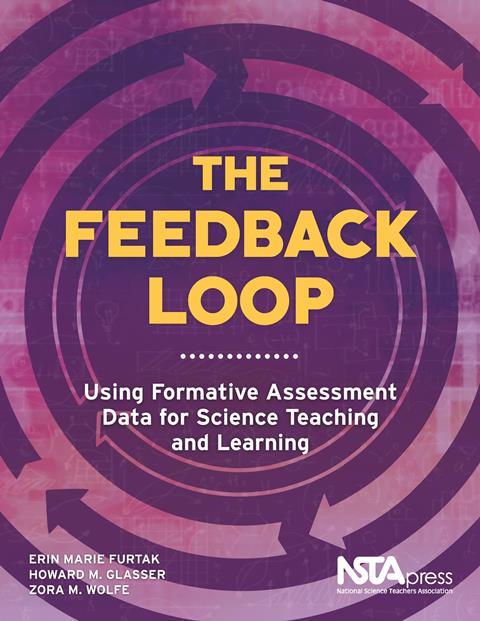Circular assessment: using formative assessment data for science teaching and learning
The feedback loop
Erin Marie Furtak, Howard M Glasser and Zora M Wolfe
NSTA Press
2016 | 175 pp | £33.50 (PB)
ISBN 9781941316146
http://amzn.to/2emkove
Effective feedback is recognised as crucial to student progress and as the key feature of effective learning. This book presents a feedback loop model through which the authors first explain the elements of the feedback loop and then how to use it.
My main job is to train teachers. One aspect that trainees find very difficult is planning for and implementing effective feedback and there is often a lack of existing practitioners demonstrating it. I hoped this book would provide an easy solution.
The feedback loop model is based upon recent school-based educational research. Each chapter is thoroughly referenced, mostly with peer reviewed texts, giving the reader the opportunity to follow up with further reading if required and understand the evidence base of this model. However, the layout and text is completely accessible to teachers.
The authors recognise the increasing data driven approaches of classroom teaching in the US, which is also true for the UK. They seek to broaden the perspective ‘drawing on approaches to assessment design and focusing on how data collected about student work can help teachers improve teaching and students’ learning’.
The feedback loop is a 3D model made up of four elements: goal, tool, data and inference. All aspects that we know make up effective feedback. The first part of the book provides useful resources, frameworks and templates for addressing these elements. The second, much shorter, part provides a rich insight into how to use the feedback loop, drawing on exemplars of pupils’ work to exemplify and interviews with teachers to illustrate their experiences.
This by no means provides a quick fix to improve effective feedback, but if taken on whole-heartedly, I can imagine considerable benefits for both pupils and teachers engaging with the model. I will certainly use it as an example for trainee teachers, if nothing else to illustrate the complexity of effective feedback and highlight the key elements. I will also suggest it as a framework for teacher researchers who are looking to improve their feedback through action research.










No comments yet